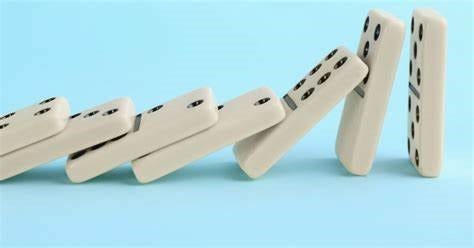Welcome to the new subscribers to this Substack. This is the third edition this week (again prompted by a recent news item), but there will now be a short pause.
Can I also recommend the Substack ‘Geography is everything’ by the US writer Geoff Gibson?
[Figures from Geography Review. Adapted from an article by Simon Oakes]
In A-level geography, the term threshold has a specialized meaning. It refers to a tipping point in a system; a critical level beyond which change is inevitable and/or irreversible.
The concept of threshold can be applied to several elements of the A level course.
Cold environments and the carbon cycle
Many scientists believe that a global temperature rise of 1.5–2°C would be enough to trigger irreversible wide-scale melting of permafrost in arctic and periglacial environments. If the rise in global mean surface temperature (GMST) does not exceed this critical threshold, then the Earth’s climate system may remain broadly in its current state. However, if the suggested threshold temperature rise of 1.5–2°C is exceeded, positive feedback mechanisms are projected to make GMST rise further and faster, even if human-induced (anthropogenic) emissions of carbon are curbed by mitigation efforts. This is because vast quantities of methane, a powerful greenhouse gas, are stored in permafrost.
It was announced on 17th May 2023 that there is now a 66% chance that the world will pass the 1.5C global warming threshold by the end of 2027.
Water and carbon cycles, and ecosystems
Consider Figure 1 which shows trends in vegetation cover (number of plants per hectare) in two neighbouring areas of semi-arid scrubland where cattle were allowed to graze from 1980 to 2015. In Area A, which has been well-managed, the pressure of grazing cattle is removed every 5 years. The cattle are moved elsewhere; vegetation is given time to recover. There is a periodic reduction and subsequent recovery in plant cover, and the ecosystem stays in a relatively stable state over time. So, regular removal of the cattle has helped this environment to remain resilient.
Figure 1.
The number of plants per hectare (ha) found in semi-arid scrubland used for cattle grazing.
In contrast, Area B was subject to constant grazing pressure between 1980 and 1995. At no point were the cattle removed and the vegetation allowed to recover. Persistent overgrazing eventually led to the loss of many plants, and hence interception storage, that excess runoff during rainfall events began to erode the exposed soil. The decline in the number of plants shown after 1995 happened not only because of cattle grazing, widespread soil erosion was occurring too. Because of this problem, cattle were removed completely from Area B in 2000. However, plant numbers did not recover. This was because of the permanent loss of topsoil caused by plant numbers falling below the critical threshold level after 1995.
As a result, there has been permanent change in how the water and carbon cycles operate in Area B, with irreversible loss of above-ground carbon and water storage in the biomass.
Changing places
Figure 2. Population changes for two rural villages (Nedbury and Halton) 1974-2014
Figure 2 shows population change in two rural villages between 1974 and 2014. Nedbury gradually lost population during the 1970s and 1980s; however its primary school remained open. This is because the population never declined below a critical threshold level that would have required the school to close. As a result, the village was able to attract new in-migrants from the 1990s onwards. By 2014, village population had recovered to the same level as the early 1970s.
In contrast, population loss in Halton was worse than that in Nedbury during the early 1990s. However, this slight difference affected Halton significantly. Its primary school closed when the village population fell below the threshold level required for an educational service to be provided. In the subsequent years, more families have left Halton because it has no school. Potential in-migrants avoid this place for the same reason; Halton has entered an unsustainable state.





